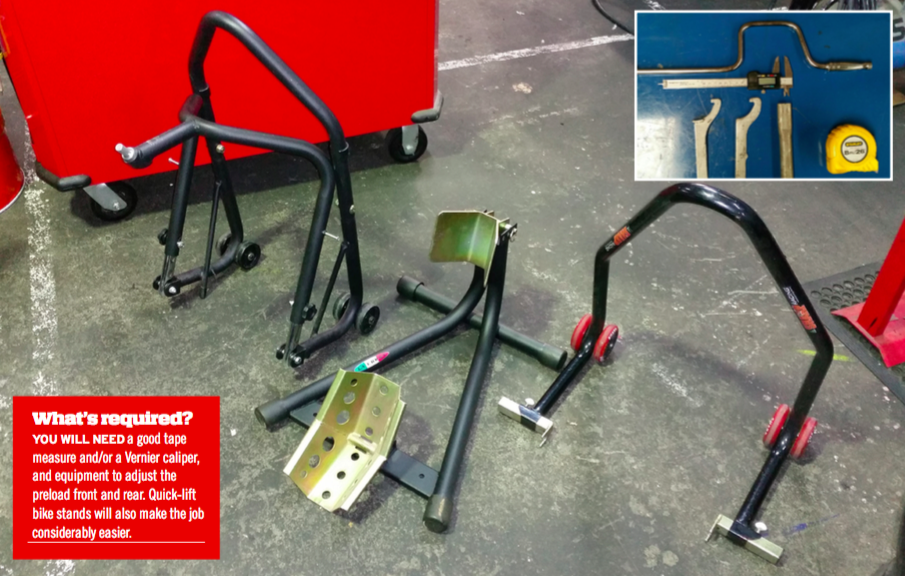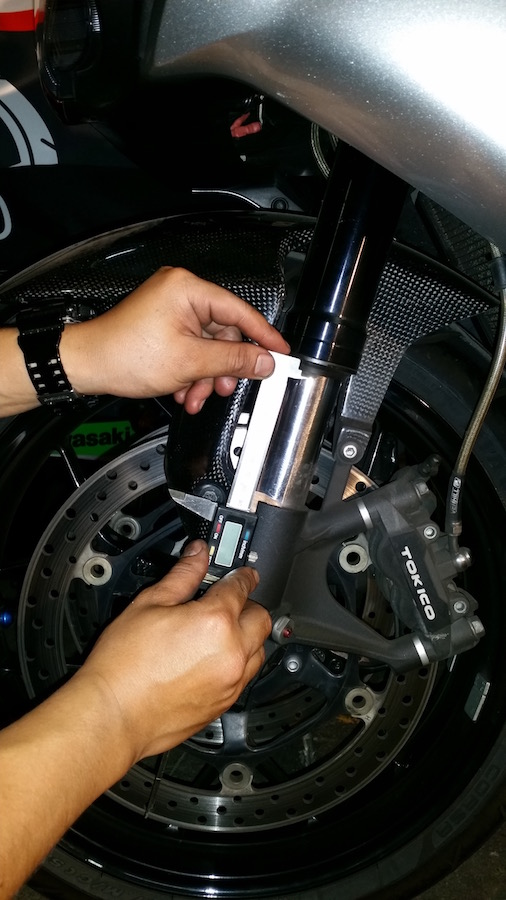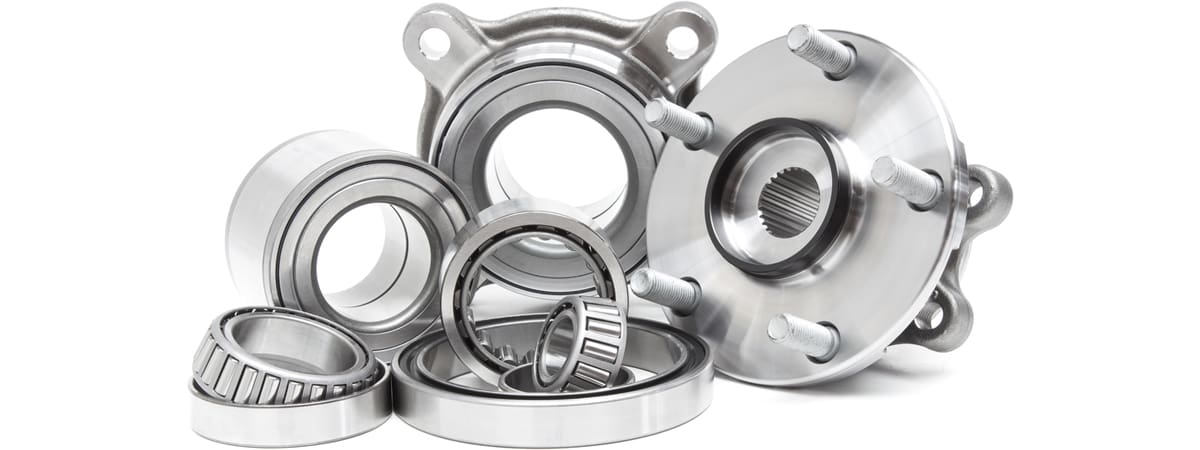No, we are not referring to your poor posture after a long day in the saddle. Rider sag relates to the amount that a bike’s suspension compresses when you sit on it, and there is generally an optimum setting for different bikes and applications.
To work out rider sag we must first determine if the static sag is in the correct ‘zone’ (i.e. 5-10mm). Static sag is how much of the suspension travel is taken up by the bike’s weight. Then we check the sag with the rider on board.
It may sound complicated but it’s not, and we’re going to give you 10 simple steps to check this at home – all you’ll need are a few tools and a couple of willing helpers. Not only does this procedure assist your bike to operate in optimal range of its suspension travel while riding, it also reveals whether the spring rates on your motorcycle need to be changed to suit your weight.

Start here
1.We’ll start with the front end, so the wheel needs to be off the ground with the front forks fully extended.
2. Carefully measure the free length of the fork leg at full extension (F1). For upside-down forks, measure from the fork seal to where the leg-hub casting starts; on conventional forks the top of the fork seal to the underside of the lower triple clamp works. Then measure the fork length when the bike is sitting with just its own weight applied (F2). The static sag can be determined by subtracting F2 from F1. So F1 – F2 = static sag.

3. Now, with the bike back on the ground, have the rider sit on it in the normal riding position and with the normal riding gear and luggage. It is best to have a third person to hold the bike upright while you take another measurement from the exact same place (call this F3). Make sure the rider has both feet on the pegs and is not applying either brake.

4. Deduct the measurement taken at Step 3 from the free length measurement taken in Step 2 and you have the sag amount for the front end. In this case F1 – F3 = front rider sag (e.g. 125mm – 95mm = 30mm)

5. The rear follows a similar process, so start by lifting the wheel completely off the ground to measure the shock’s free length (R1).

6. Placing a mark on something fixed to the subframe above the centre of the rear axle will help to give you consistent figures. Bodywork is subject to flex and movement that can throw your calculations out.

7. Again make sure the rider is in the normal riding position before taking the third measurement (R3) and use the same measuring points from axle centre to your mark.

8. The rear rider sag in this case is R1 – R3 (for example 478mm – 440mm = 38mm). Check your service manual for the recommended spring preload setting and start there. Ideal rider sag can range from 25mm to 40mm or more, depending on the bike and how you intend to use it. A good rule of thumb is to aim for 30mm for street use, and 25mm for track use.

9. The sag amount is adjusted by adding or removing spring preload front and rear. Add preload to reduce the sag and remove preload to obtain a higher rider sag figure. One full rotation of the preload adjuster on the front fork usually changes the sag by 1mm.

10. Repeat the measurements and check that the preload adjustment has had the desired effect. Adjusting the suspension sag will affect the bike’s handling characteristics so make changes in small increments and test the bike carefully afterwards.

Thanks to Jason Chhit Straight 4 Motorcycles
By Paul McCann









